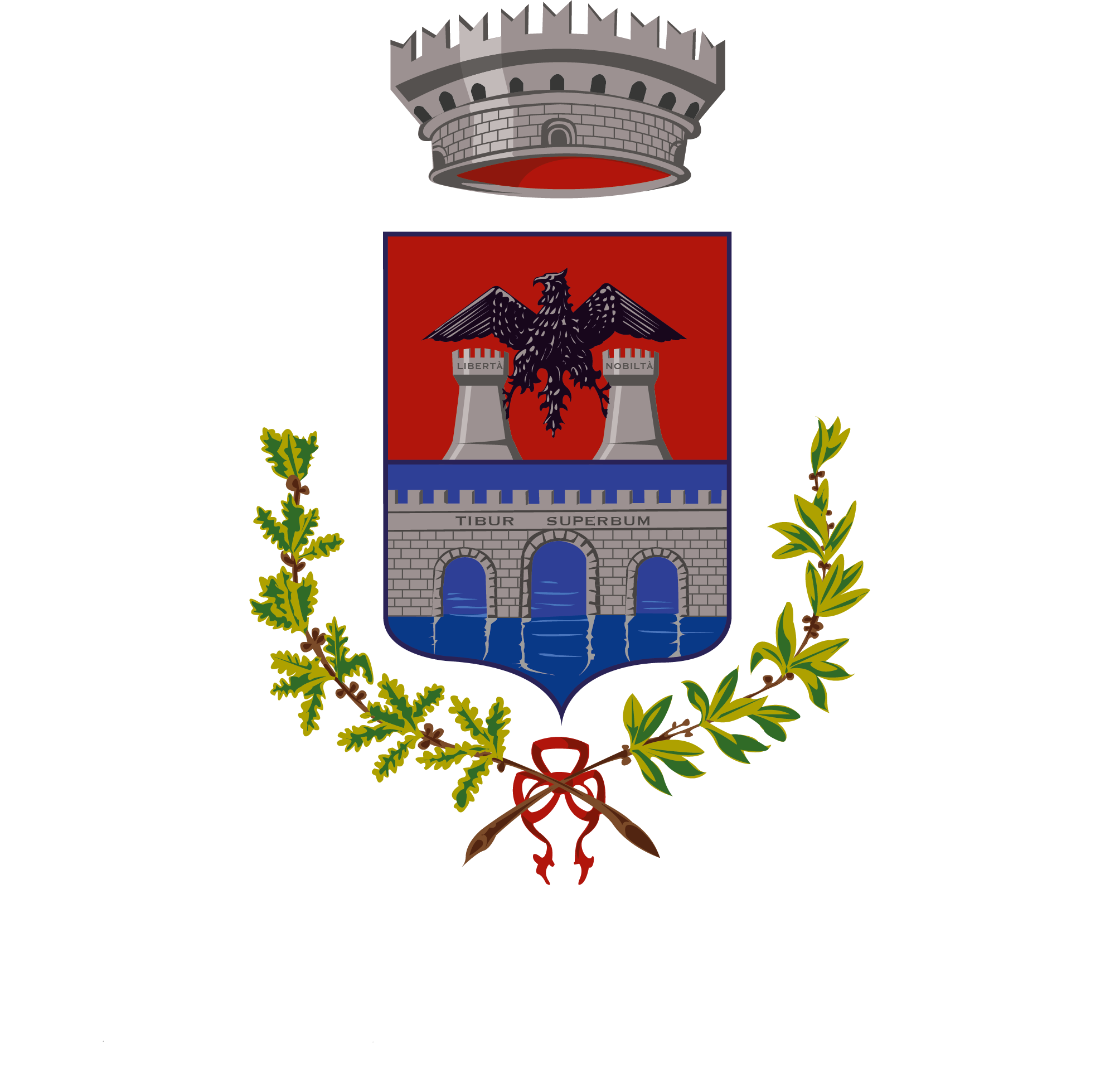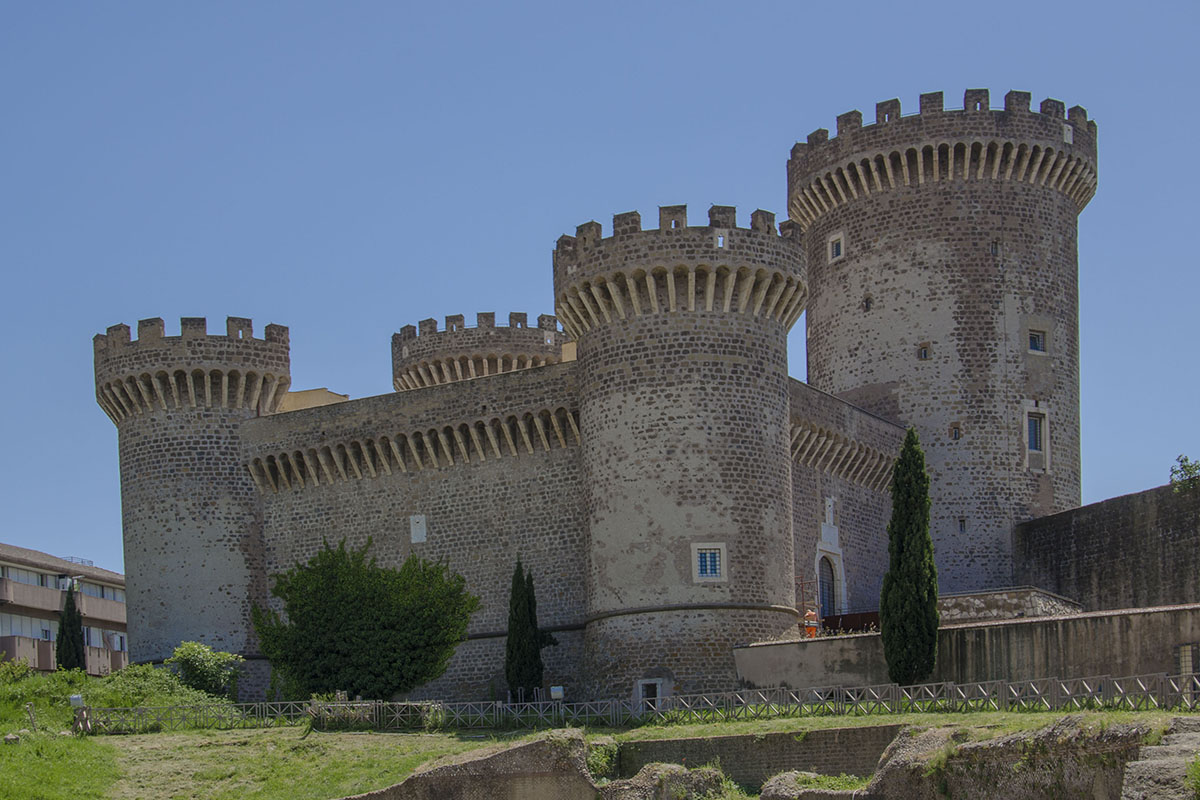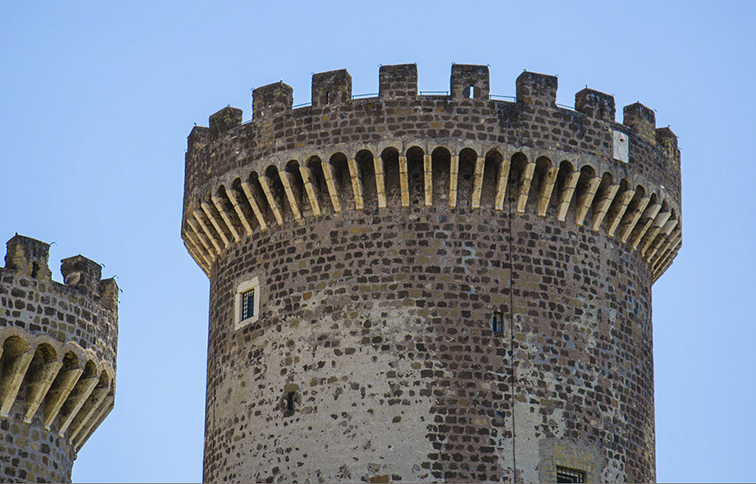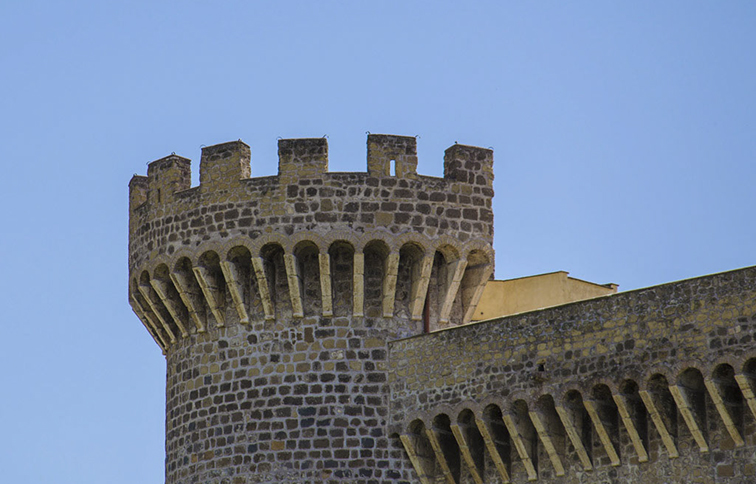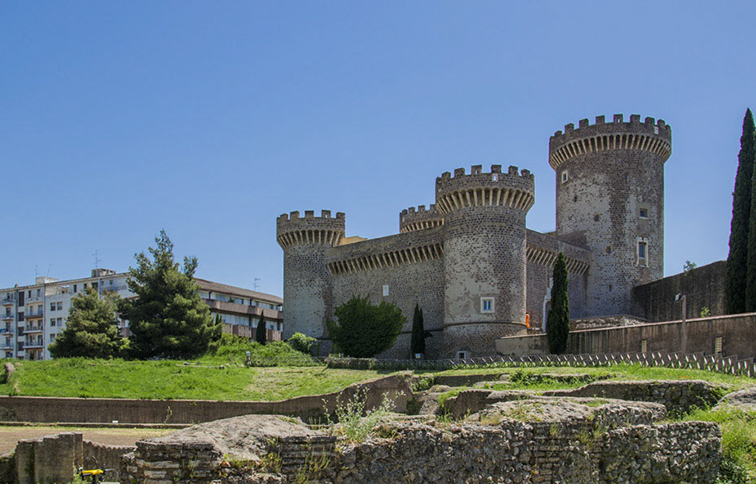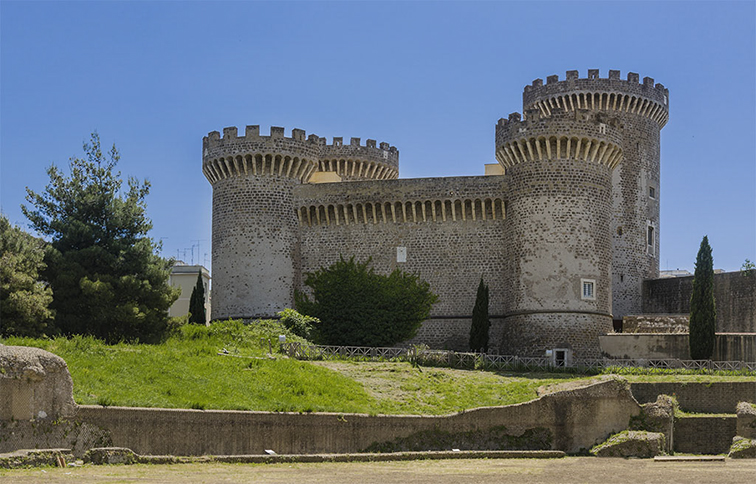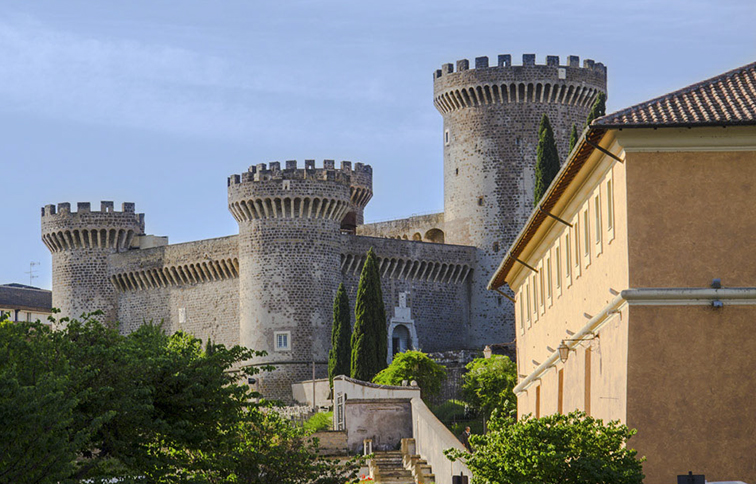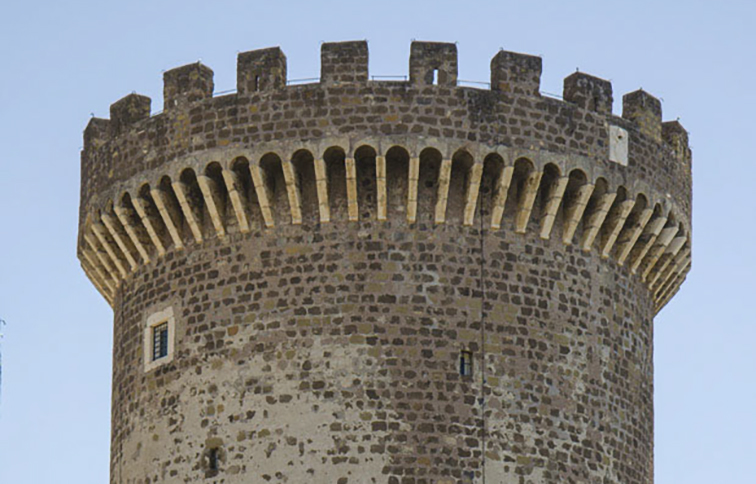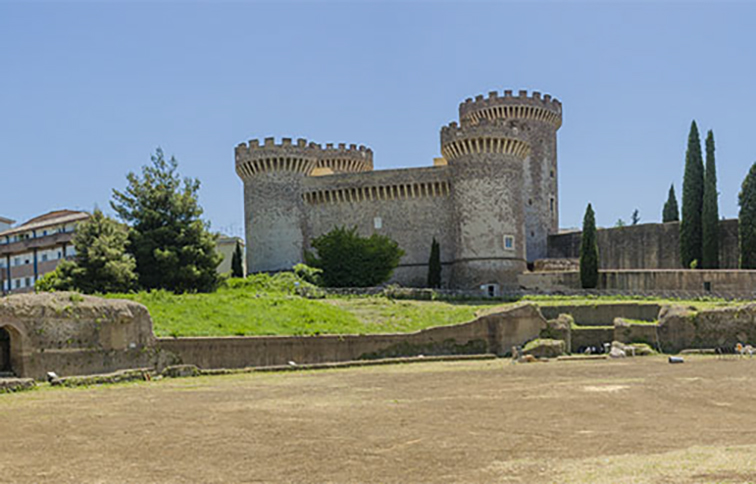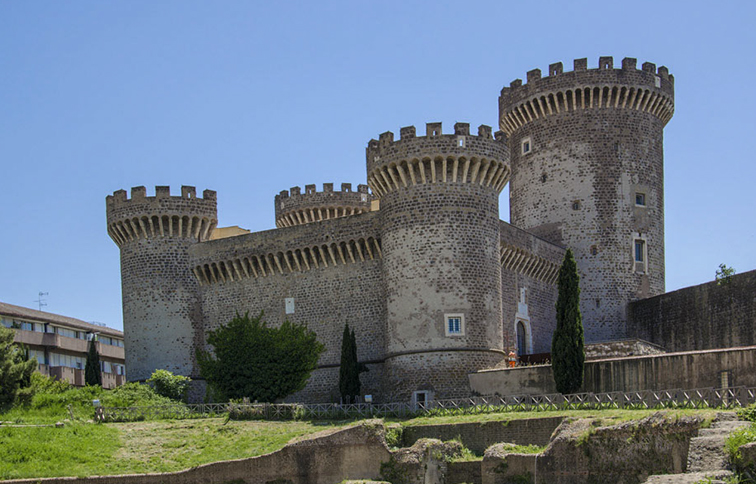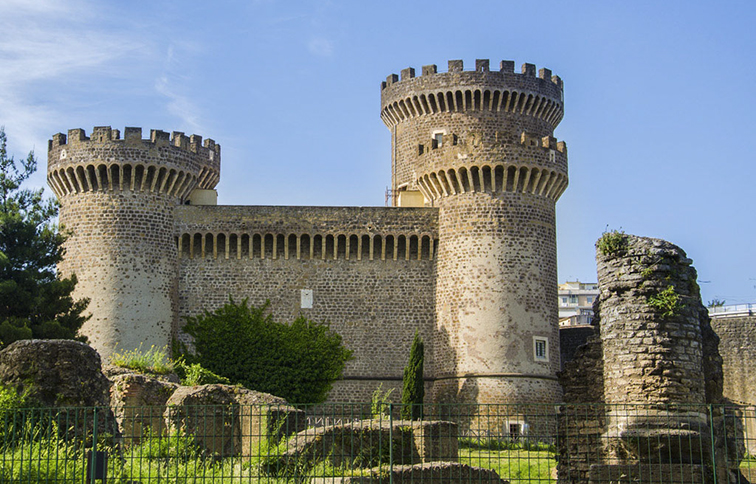Rocca Pia
Partially built using materials from the nearby amphitheater of Bleso, Rocca Pia was commissioned by Pope Pio II Piccolomini (1405-1458), who started its construction in 1461.
Chosen for strategic reasons, both for military defense of the city, as a stationing element for the Papal troops controlling all access routes to Tivoli and the entire territory facing Rome, and to monitor the city and the internal disputes between the Orsini and Colonna families. The marble inscription above the entrance contains verses by Giovanni Antonio Campano, Bishop of Teramo, a humanist of the Papal Court and great friend of Pope Pio II Piccolomini: “Welcomed by the good, frowned upon by the wicked, enemy to the proud, here I am, for you in Tivoli, as Pio decided.”
Giorgio Vasari, the sole source, attributes the design of Rocca to Filarete and his disciples, although other military architects from Pio II's circle were likely involved. The complex consists of four towers of different sizes, connected by high walls and topped with Guelph merlons; gun ports open at various points. The entrance to the fortress, on the west side, was protected by a deep defensive ditch and a drawbridge. It's almost certain that the completion of the work occurred under Pope Alessandro VI (1492-1503), who built the two smaller towers. When Cardinal Ippolito II d'Este received from Pope Giulio III (1550-1553) the appointment as Governor of Tivoli, he did not hesitate to occupy the green area around Rocca, where the Roman Amphitheater (then not visible as it was covered by soil) was located, and to fence it off, using it as a hunting reserve (the place was called the “Barchetto”).
It later survived almost as an appendage of Villa d'Este, and in 1621, Cardinal Alessandro d'Este built the “Stallone Estense”, the Stables, where more than one hundred horses were accommodated.
In the 18th century, Rocca, used as a Papal barracks and prison, underwent structural modifications that changed its architectural appearance, especially of the internal courtyard, where a body was added to the North wall, altering the smaller towers and significantly reducing the courtyard's size. In the 19th century, it alternated between the function of Papal barracks and prison, capable of housing up to 100 detainees in the circular towers; it maintained this function until 1960, thus remaining alive to this day, bearing witness to over 500 years of history.
How to reach it
